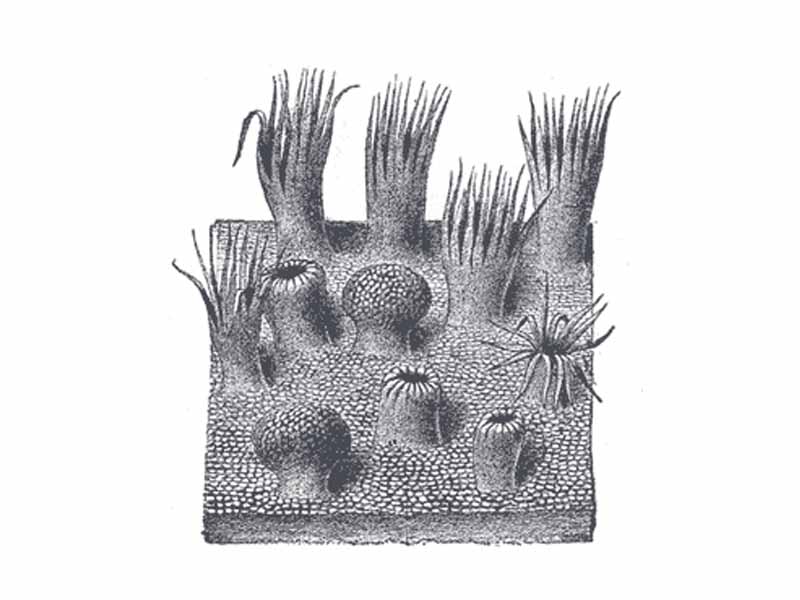Interdisciplinary Note (3 of 36)
At the most basic level, stimuli acts on receptor cells that somehow will affect the flow of ions across membranes. Receptor cells are signal transducers, specialized to transduce a chemical, mechanical, or light signal (chemoreception, mechanoreception, or photoreception) into a nerve impulse.
Step back and look at sense organs in the most basic way. Ear, nose, eye. What you have are receptor cells in combination with the anatomical parts that funnel stimuli to the receptor cells.
When receptor molecules on the microvilli of taste-receptor cells bind a target substance, the taste-receptor cell depolarizes, triggering neurotransmitter release at the opposite end where the receptor cells synapse with neurons.
Human olfactory receptors are true neurons extending from the nasal cavity and synapsing with neurons of the olfactory bulb of the brain. The olfactory receptors terminate in microvilli embedded with receptor molecules projecting into a thin mucus layer in the nasal cavity.
The binding of a substance to a receptor molecule triggers a series of events in an olfactory receptor cell. The first event triggered is the elevation of the enzyme adenyl cyclase by G-protein which increases the level of cyclic AMP. The cyclic AMP then binds to transmembrane channels allowing the facilitated diffusion of Na+, causing a change in the state of cell polarization and a change against the baseline rate of impulse transmission. Similar to the send messenger system in endocrine signal amplification and transduction, the G-protein second messenger system is a common motif in sensory system signal transduction, being present in many sensory systems.
Here's a bit of nomenclature on the sensory receptors in the skin, not for memorization but in case you run into it in a passage. As far as we can tell, you don't have to memorize these, but it is better to have seen them before, because they can definitely show up in passages, and you want to have your footing.
Meissner's and Pacinian corpuscles are mechanoreceptors in the skin that detect light touch and pressure respectively. Skin also contains pain-receptor nerve endings as well as Ruffini's corpuscles (heat) and Krause's end bulbs (cold). It's almost like they had a gold rush for naming rights in this field.
Hair cells in the lateral line in fish and amphibians are the evolutionary precursors of the hair cells of the inner ear.
That will definitely be on your test.
The shifting and bending of sensory hairs by otoliths (calcium carbonate crystals within a gelatinous matrix) within the utricle and saccule of the inner ear register changes in the position of the head relative to the gravitational field of the earth. Shifts in the otolith position also provides information about acceleration and deceleration. Angular acceleration is detected by changes in the flow of endolymph in the semicircular canals.
The structures of the middle ear, tympanum, malleus, incus, stapes, round window, transduce a sound wave leading to pressure waves in the perilymph of the cochlea of the inner ear. The waves in the perilymph assume a spatial distribution as standing waves triggering impulses and also impulses in line with source frequency where possible. The waves in the endolymph displace particular areas of the basilar membrane depending on the frequency or position of the input mapped onto the organ of Corti.

